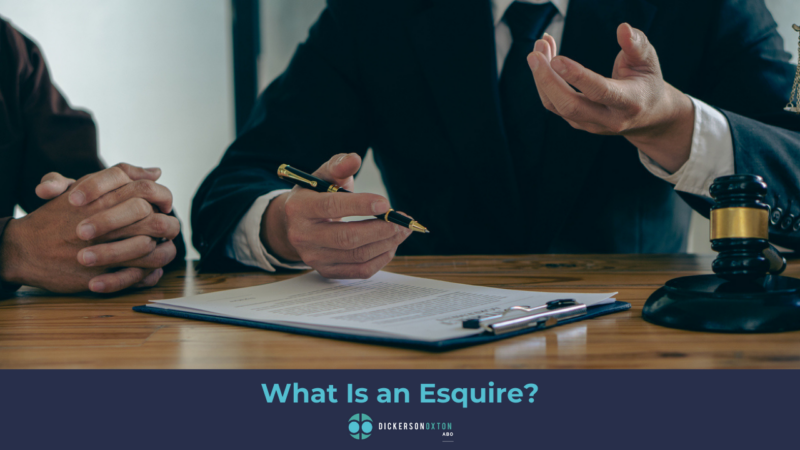January 24, 2024
How to Get the Most Money From Insurance for a Totaled Car: Maximizing Your Settlement
When a car is deemed a total loss by an insurance company, the owner is often faced with significant financial decisions. Navigating the insurance claims process to maximize the monetary compensation requires understanding both the policy in question and the myriad of state laws that can affect the payout. The key to achieving the best possible outcome lies in knowledge and negotiation, starting with a clear grasp of the term ‘totaled’, which typically means the cost of repairs exceeds the value of the car.
The process usually involves the insurance company’s assessment of the car’s actual cash value (ACV) before the accident. Policyholders can position themselves for a favorable evaluation by gathering complete records of maintenance, repairs, and upgrades that might boost the car’s valuation. Providing this documentation along with a well-reasoned counter-estimate, if warranted, can lead to a more advantageous settlement.
Insurance companies are expected to offer a fair settlement, but policyholders should be prepared to advocate for themselves. This might entail disputing the initial offer if it seems too low, which involves compiling evidence such as comparable listings in the local market and seeking independent appraisals. Understanding when and how to negotiate can impact the final amount received for a car that can no longer serve its owner.
Understanding Car Insurance Policy
When an individual purchases car insurance, they enter into a contract with an insurance company. The policyholder agrees to pay a premium, and in return, the insurance company agrees to cover certain losses, damage, or liability up to a specified limit, as outlined in the policy terms.
Key Components of a Car Insurance Policy:
- Policy Declaration: Usually the first part of the policy, it outlines personal information about the insured, the period of coverage, description of the vehicle, coverage types, and limits.
- Coverage: Different types of coverage include liability, collision, comprehensive, personal injury protection (PIP), and uninsured/underinsured motorist coverage.
- Exclusions: Lists situations or events not covered by the policy. It’s crucial to understand these to avoid surprises during a claim.
- Conditions: The section that specifies the obligations of both the policyholder and the insurer. This includes paying premiums on time and reporting accidents promptly.
- Limits: This refers to the maximum amount an insurance company will pay for a covered claim.
The Importance of Understanding Your Policy:
An individual should familiarize themselves with their insurance policy to ensure they have the necessary coverage to protect against financial loss. Understanding the policy aids in making informed decisions about coverage levels and reveals any additional endorsements that could enhance their protection.
For obtaining the most money from insurance for a totaled car, the policyholder should review the coverage limits and understand the actual cash value (ACV) versus the replacement cost, as these factors determine the payout for a totaled vehicle. It’s also advised to keep the insurance documentation accessible and to contact their insurance agent for any clarifications on policy details.
Determining Your Car’s Total Loss Status
When an insurance company declares a vehicle a total loss, it means the cost of repairing the car exceeds a certain percentage of the vehicle’s value. This percentage varies by insurer and state but typically ranges from 60% to 100%.
To determine if a car is a total loss, insurers use a formula:
Total Loss Formula: Cost of Repairs + Salvage Value > Actual Cash Value
Here’s what these terms mean:
- Cost of Repairs: Estimated expenses to restore the vehicle.
- Salvage Value: Expected amount the insurer can recoup by selling the damaged vehicle.
- Actual Cash Value (ACV): The car’s pre-accident market value considering depreciation.
Insurers assess the damage to compile an initial repair estimate. An appraiser or adjuster typically conducts this assessment. The vehicle owner can also receive a repair estimate from a trusted mechanic.
It’s important for owners to:
- Document everything: Keep records of all communications with the insurance company.
- Understand their policy: Review the insurance policy to know how total loss is determined.
In some cases, insurance companies may offer to calculate the ACV using a third-party valuation service to provide a fair market value for the vehicle.
If the owner disagrees with the assessment, they have the right to:
- Negotiate: Present evidence such as maintenance records or recent upgrades that may increase the car’s value.
- Independent Appraisal: They can seek a separate appraisal at their own expense.
To summarize, the vehicle is considered a total loss if the sum of the repair costs and salvage value surpasses the ACV, and owners must understand how to navigate their policy and the valuation process effectively.
Getting a Fair Vehicle Valuation
Securing a fair valuation for a totaled car hinges on thorough research, meticulous record-keeping, and effective negotiation skills.
Researching the Car’s Value
One must investigate the car’s market value before engaging with the insurance company. Essential sources include:
- Kelley Blue Book
- Edmunds
- National Association of Automobile Dealers (NADA)
These resources provide estimates based on the car’s make, model, year, mileage, and condition. It is advantageous to gather data from multiple sources to ensure a comprehensive understanding of the car’s worth.
Compiling Car Documentation
The owner should assemble all pertinent documents to substantiate the car’s value. Necessary paperwork includes:
- Service records: Detailing maintenance history.
- Upgrade receipts: Indicating added value from enhancements.
- Accident history report: Reflecting the vehicle’s history.
Carful documentation can significantly influence the insurance adjuster’s valuation by providing concrete evidence of the car’s maintained condition and value.
Negotiating with the Insurance Adjuster
The art of negotiation with an insurance adjuster requires assertiveness backed by evidence. They should:
- Present the collected data on the car’s value confidently.
- Clarify the basis for any discrepancies between their valuation and the insurance company’s offer.
- Address each counterpoint with detailed information and logical argumentation.
Direct communication and an informed stance increase the likelihood of arriving at a fair compensation for a totaled vehicle.
Knowing Your Rights and Insurance Terms
When dealing with a totaled car, understanding the insurance policy is crucial. The policyholder should be aware of the following terms:
- Actual Cash Value (ACV): This is the amount equal to the replacement cost of the car minus depreciation. Insurers use this figure as the vehicle’s worth just before the accident.
- Deductible: This is the out-of-pocket cost the policyholder is responsible for before the insurance coverage kicks in.
- Policy Limits: The maximum amount the insurance company will pay under a policy for a covered loss.
- Total Loss: A car is considered a total loss if the cost of repairs exceeds a certain threshold of the car’s value, often dictated by state law or insurer’s guidelines.
Key rights for policyholders include:
- Right to a Timely Response: Insurers must acknowledge and act promptly upon claims.
- Right to Full Explanation: Policyholders are entitled to a detailed justification of any denials or settlements.
- Right to Appeal: If a claim is denied, policyholders have the right to challenge the decision.
- Right to Fair Valuation: Policyholders can expect a fair market valuation for their totaled car based on ACV.
It is advised that they:
- Review the insurance policy thoroughly.
- Ask questions to clarify any doubts.
- Document all communications with their insurer.
- Seek professional appraisal if they disagree with the ACV.
Remember, insurance companies must abide by the terms of their policies and the laws of the jurisdiction in which the accident occurred. Familiarity with these aspects empowers policyholders to negotiate effectively.
Maximizing Insurance Payouts
When dealing with a totaled car, obtaining the maximum payout from an insurance claim involves a comprehensive understanding of the process. Accurate and timely filing, meticulous documentation of damages, and awareness of compensable losses are pivotal.
Filing the Claim Promptly
To ensure a swift insurance process, the insured individual must file the claim immediately after the incident. Delays can not only hinder the flow but also raise questions regarding the legitimacy of the claim. They should comply with their insurance policy’s timeline requirements and submit any necessary forms or reports to the insurer as soon as possible.
Including All Damages
Documentation is critical for comprehensive compensation. The insured should:
- List every damage: Internally and externally, even those which may seem inconsequential.
- Provide photographic evidence: Clear images from multiple angles.
- Supply expert assessments: Estimates from certified mechanics or repair shops.
An itemized breakdown of damages will support the claim for the car’s full value pre-accident.
Claiming Additional Losses
Various additional losses can be claimed such as:
- Loss of use: Costs for temporary transportation while the car is unusable.
- Depreciation: The diminished value of the car even after repairs.
- Personal property: Items within the car that were damaged or lost.
For each, receipts or appraisals support the claim. The insured must understand their policy’s coverage for these losses and provide the necessary proof to maximize their compensation from the insurance payout.
Handling Insurance Disputes
When a disagreement with an insurance provider arises after a car is deemed a total loss, policyholders have specific courses of action they can take. Engaging with legal professionals or using formal appraisal processes can ensure a fair settlement.
When to Consult an Attorney
If negotiations with the insurance company stall or the settlement offer seems unjust, consulting an attorney is advisable. Lawyers specializing in insurance claims can assess the fairness of the offer and may intervene on the policyholder’s behalf. Legal representation often results in more favorable outcomes for individuals unfamiliar with insurance law and regulations.
- Reasons to hire an attorney:
- Dispute over fault or coverage
- Settlement offer far below the car’s market value
- Unresponsiveness or bad faith practices by the insurance company
Utilizing Appraisal and Arbitration
For policyholders challenging the insurance company’s valuation, the appraisal clause in most insurance policies provides a method to dispute the offer. This process involves hiring an independent appraiser to determine the car’s value.
- Steps in the Appraisal Process:
- Policyholder hires an independent appraiser
- Insurance company also hires their appraiser
- If appraisals differ, an umpire is selected to make a binding decision
Arbitration can be an alternative to litigation. It is a dispute resolution process where an arbitrator reviews the evidence and makes a decision that can be binding or nonbinding, based on the policy terms.
- Key points about arbitration:
- Typically faster and less expensive than court
- Can be binding or nonbinding
After Settlement: Next Steps
Once the insurance settlement for a totaled car is completed, individuals should focus on addressing any remaining car loan balances and exploring options for acquiring a replacement vehicle.
Car Loan and Gap Insurance Considerations
After an insurance payout, it’s crucial to apply the settlement amount to any outstanding car loan. If the insurance proceeds do not cover the full balance, one may be responsible for the remaining debt. This is where Gap insurance can be beneficial. Gap insurance covers the difference between the insurance settlement and the remaining loan balance. If one has gap insurance, they should contact their provider to initiate a claim.
Buying a Replacement Vehicle
When purchasing a replacement vehicle, consider the following:
- Budget: Determine what one can afford, factoring in the insurance payout and any additional funds needed.
Expenses Amount ($) Insurance Payout Settlement amountSavings Personal contributionLoan/Finance Potential borrowing amount - Vehicle Needs: Assess the type of vehicle that will suit one’s needs, such as size, performance, and fuel efficiency.
- Research: Investigate the market for available vehicles. Utilize resources like consumer reports, online reviews, and local dealership listings.
- Make
- Model
- Year
- Mileage
- Condition
- Negotiation: Approach the purchasing process with confidence. One should be prepared to negotiate on price, especially when armed with market knowledge and a clear understanding of the vehicle’s value.




